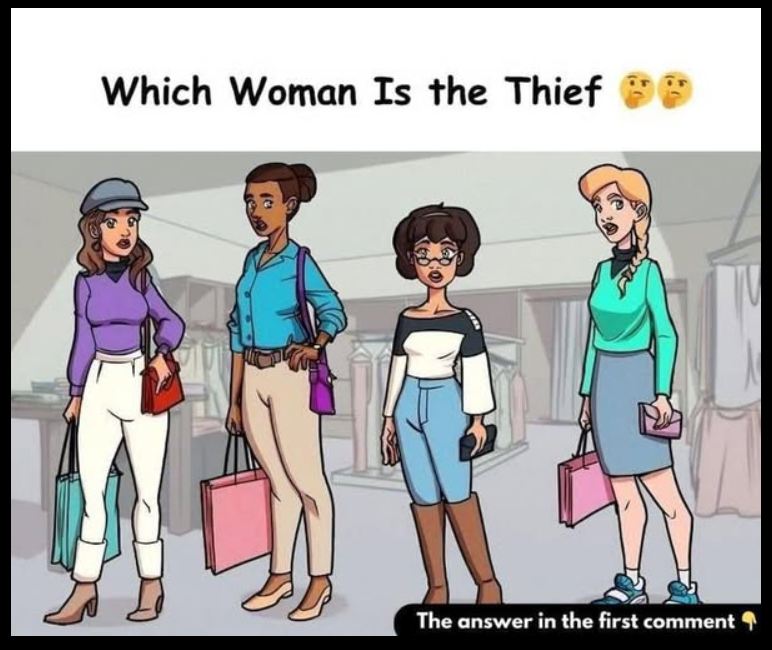Have you ever come across one of those brain teasers that seem incredibly easy at first glance, only to realize the more you look at it, the trickier it gets? That’s exactly what makes the puzzle “Which Woman Is the Thief?” such a fun and challenging experience. It’s designed to test your observation skills and logical thinking, pushing you to focus on what really matters instead of being distracted by surface-level clues. The scenario is straightforward: four women are shown standing together, and one of them is the thief.

Your job is to figure out which one. It might sound simple, but the solution is not as obvious as you might think. A lot of people immediately start examining the women’s expressions, body language, or even the direction in which they’re looking. It’s easy to assume that guilt can be spotted by a nervous look or a defensive posture, but in this particular puzzle, those details are actually meant to throw you off. What really matters lies not in their facial expressions or gestures, but in something far more subtle: their shoes. That’s right—the key to solving this puzzle is all about paying close attention to their footwear.
At first, it might sound silly to think shoes would be the determining factor in identifying a thief. But once you start analyzing the image more carefully, you’ll notice that three of the women are wearing matching shoes—same color, same style, one for each foot. However, one woman stands out because her shoes don’t match. She’s wearing two different shoes, one on each foot, which is unusual and clearly not a fashion statement. This small but critical clue is what gives her away.
Think about it—why would someone be wearing mismatched shoes unless something went wrong? It’s not a coincidence. The implication here is that in the act of committing the theft or while fleeing the scene, the thief may have had to leave in a hurry, perhaps even grabbing one shoe that wasn’t hers in the process. Maybe she was caught off guard, panicked, and didn’t have time to put on her own shoes properly. Or maybe she lost one in the rush and had to replace it with whatever she could find. Either way, it’s not about looking guilty—it’s about making a mistake that points to guilt. That’s what makes this puzzle so clever.
It’s not testing your ability to read emotions or guess based on instinct. It’s testing your attention to detail and your ability to think logically. By focusing on something most people overlook, you’re able to arrive at the correct conclusion. It’s a reminder that sometimes the most telling signs are not the ones people expect. We’re often conditioned to believe we can spot dishonesty through facial expressions or tone of voice, but in reality, physical evidence—like a mismatched pair of shoes—is far more reliable. In today’s fast-paced world, where distractions are everywhere and we’re constantly being pulled in different directions, exercises like this are more than just entertainment. They help sharpen our focus and remind us of the importance of observing carefully, analyzing rationally, and questioning what we see rather than jumping to conclusions. So, next time you’re faced with a puzzle or a real-life mystery, take a moment to look past the obvious. Don’t get sidetracked by appearances or assumptions. Instead, pay attention to the little things—the details that don’t quite fit, the inconsistencies that others ignore. Because, as this puzzle proves, sometimes the answer is right in front of you, hidden in something as small as a mismatched shoe. And once you spot it, you’ll never look at puzzles—or people—the same way again.





